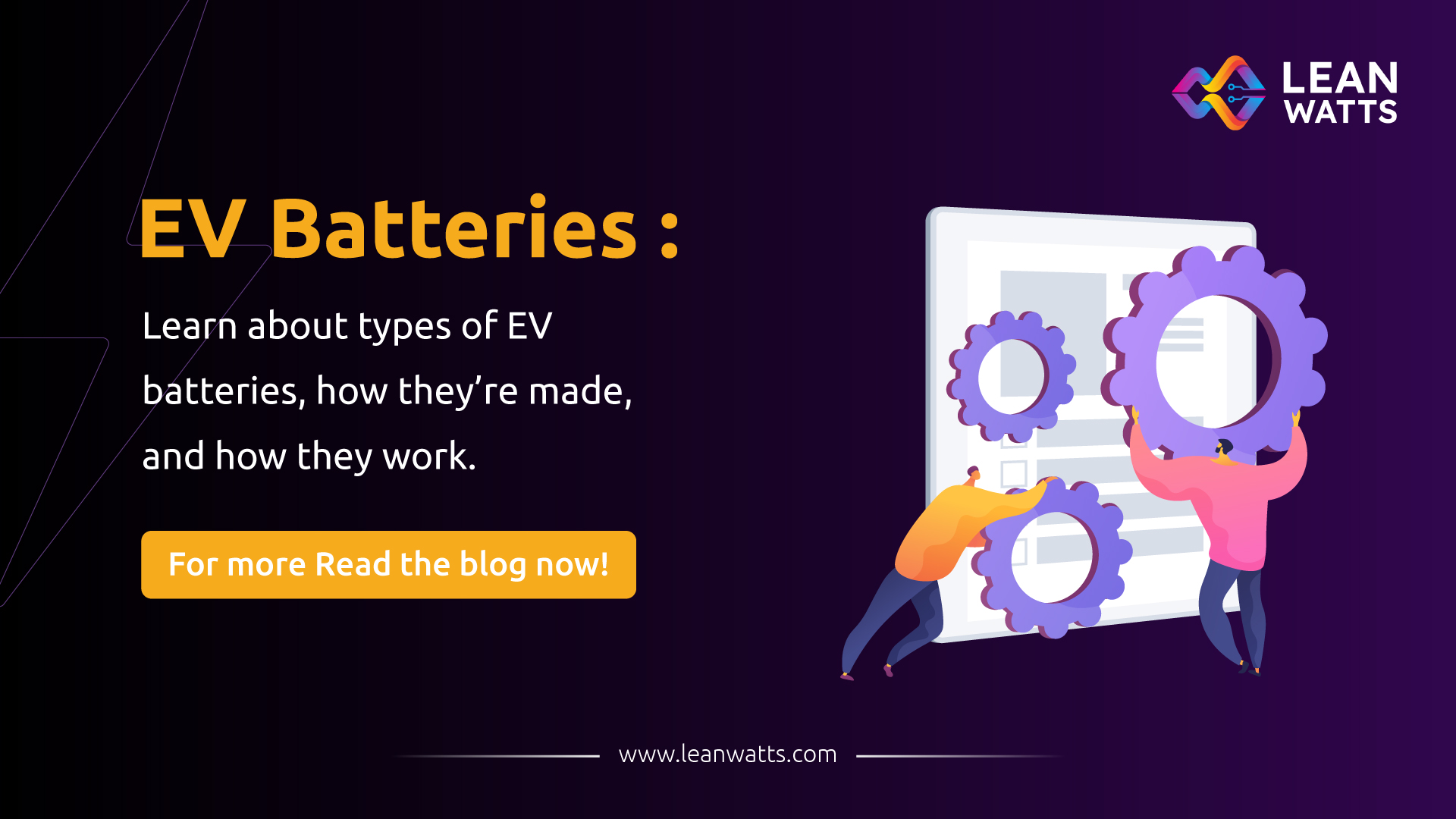
Electric vehicles (EVs) are rapidly changing the transportation landscape. But what fuels these clean machines? The answer lies in the heart of the EV: the battery. In this first part of our EV battery series, we’ll delve into the basics – what types of batteries that power EVs, how they work, and the key components that make them tick.

Under the Hood: Unveiling EV Battery Types
While Lithium-Ion batteries dominate EVs due to their high capacity, older hybrid electric vehicles sometimes relied on Nickel-Metal Hydride (NiMH) batteries which offered more power than Lead-Acid batteries but had a memory effect. Lead-Acid batteries, known for their affordability and established technology, are bulky and less energy-dense compared to NiMH, making them more suited for starter batteries in gasoline vehicles. Let’s explore the different EV types that utilise these batteries:
- Battery Electric Vehicles (BEVs): These are fully electric, powered solely by electricity stored in the battery. Charging is done by plugging them into a wall outlet or a dedicated EV charger.
- Plug-in Hybrid Electric Vehicles (PHEVs): PHEVs offer a hybrid approach, combining an electric motor and a gasoline engine. They can operate solely on electricity for shorter distances but also have a gas engine for longer trips.
- Hybrid Electric Vehicles (HEVs): Similar to PHEVs, HEVs use both electricity and gasoline. However, HEVs cannot be plugged in for charging. Their batteries rely on the gasoline engine for power generation, making them less efficient than BEVs and PHEVs.
Why Lithium-Ion?
So, what makes lithium-ion batteries the kingpins of EVs? It boils down to several key advantages:
- High Energy Density: They store a significant amount of electrical energy in a compact and lightweight package, crucial for vehicle range.
- Temperature Resilience: They perform well in both hot and cold environments, ensuring reliable operation in various climates.
- Low Self-Discharge: They retain their charge well even when not in use, minimizing energy loss during storage.
- Charge Cycle Life: They can withstand numerous charge and discharge cycles while maintaining most of their initial capacity.
Unveiling the Inner Workings: A Peek Inside a Lithium-Ion Battery

At its core, a lithium-ion battery functions by storing and releasing electrical energy through the movement of electrons. Here’s a breakdown of the magic that happens inside:
- Electrons on the Move: Electrons flow from a negative electrode (anode) to a positive electrode (cathode) through an electrolyte – a liquid or solid medium. This movement creates electricity.
- Charging vs Discharging: When the battery is in use (discharging), electrons move from the anode to the cathode. During charging, the process reverses, with electrons flowing back from the cathode to the anode.
- The Separator: This crucial membrane keeps the anode and cathode separate while allowing lithium ions to pass through, preventing short circuits.
Think of it like this: Imagine an electron as a person taking a bus to buy groceries (electricity). The anode is their home, the cathode is the grocery store, and the electrolyte is the bus. The separator ensures they get there safely without any wrong turns!
Within the realm of lithium-ion batteries, two main types dominate the EV scene: Lithium Nickel Manganese Cobalt Oxide (NMC) and Lithium Iron Phosphate (LFP). Each has its own strengths and weaknesses:
| Feature | NMC Batteries | LFP Batteries |
| Energy Density | Higher | Lower |
| Temperature Tolerance | Better in cold weather | Better in hot weather |
| Materials | More expensive (cobalt, nickel, manganese) | Less expensive (iron) |
| Lifespan | Shorter | Longer |
| Recycling | More likely to be recycled | Less likely to be recycled |
Remember: There’s no one-size-fits-all solution when it comes to EV batteries. It’s a balancing act of factors like energy density, cost, and lifespan.
Charging EV Li-ion Batteries efficiently
Electric Vehicle (EV) chargers ensure the efficient charging of lithium-ion batteries through intelligent communication and management systems. They adjust the charging power dynamically, optimising the charging speed while preventing damage due to overheating or overcharging. Best EV chargers typically employ a multi-stage charging process to ensure the battery is charged safely at the maximum safe current while maintaining a specific voltage without experiencing undue stress.
Additionally, many EVs feature a Battery Management System (BMS) that monitors the battery’s temperature, voltage, and current during charging. The BMS works in tandem with the charger to regulate these factors, ensuring the battery charges at optimal conditions, which extends its lifespan and maintains its performance.
The Building Blocks: Essential Minerals
Lithium-ion batteries rely on a specific blend of minerals, including lithium, cobalt, manganese, nickel, and graphite. In the next part of our EV battery series, we’ll delve deeper into the origins of these critical minerals and explore how to ensure a just, equitable, and sustainable supply chain for the future of electric mobility.
Stay tuned for more fascinating insights into the world of EV batteries!
Understand the decodes of batteries, one step at a time.
